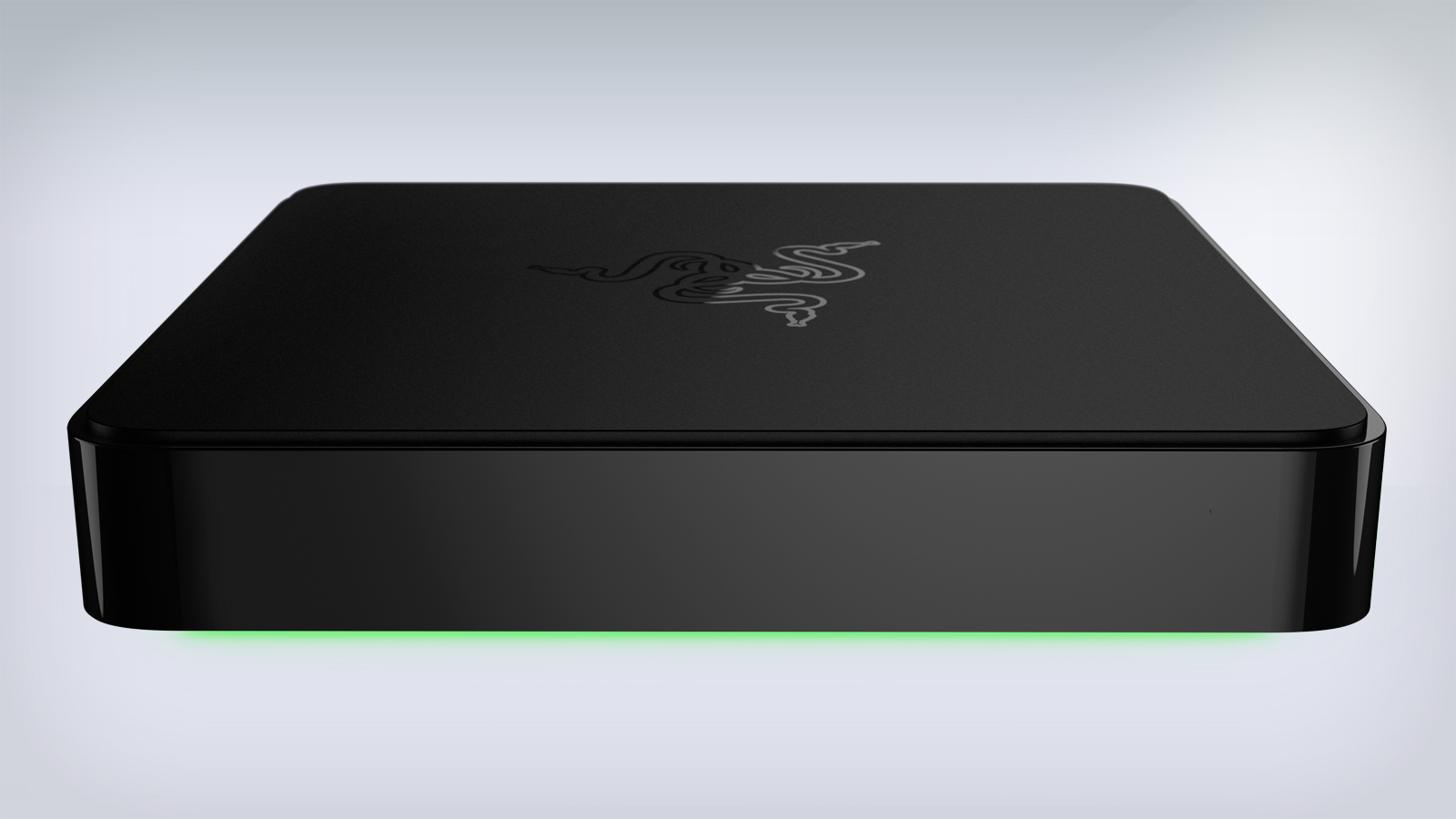Early Verdict
With two competent upcoming streamers above and below its price point, Razer's Forge TV will need to fight to convince gamers it's worth its $99/£99 price tag.
Pros
- +
Low-profile design
- +
Mid-level specs
- +
Smart pricing
Cons
- -
Serval controller not included
- -
Strong competition
Why you can trust TechRadar
Razer Forge TV has been a slippery device these past few months. Without major fanfare, Razer started selling the device on its store earlier this year, but hasn't been overly vocal about what the future of the device was going to be.
It turns out what Razer had planned was an integration with the recently acquired Ouya Store, giving it a stand-out feature in the crowded set-top market. The acquisition will bring 1,100 games to Android TV, 250 of which will be available starting today after systems undergo an over-the-air update.
It's through this partnership with Ouya - alongside a continued collaboration with Google for Android TV - that the company believes it can succeed going forward.
That said, in a recent interview with the company, executives in charge of the future of the console said they plan on backing away from some features promised one year ago at CES, namely PC-to-Forge TV streaming through Razer Cortex. There will be other options available to stream PC games (Remotr is one such solution), but for the time being a first-party solution isn't in the cards.
The $99/£99 Forge TV, an Android TV micro-console that's a step between the Nexus Player and new Nvidia Shield, may not be as much of an outside-of-the-box idea for Razer as a new VR headset, but it's something new for gamers who usually stick to traditional consoles and PCs.
More than the sum of its parts
At face value, there isn't much surprising about Forge TV. We've seen Android TV systems before, and micro-consoles like the Mad Catz M.O.J.O. and Ouya aren't all that new either.
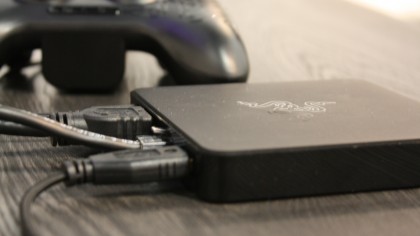
What makes Forge TV worth its weight in plastic isn't any one part individually - it's the combination of the components, the platform and the peripherals that come together to make this one of the most powerful Android micro-consoles to date.
For reference, here's what Forge has running under the hood:
- CPU: 2.7 GHz Snapdragon 805 (quad-core)
- RAM: 2GB
- Storage: 16GB
- Connectivity: Bluetooth 4.1, wireless 802.11ac, gigabit Ethernet
- Ports: HDMI 1.4 output, USB 3.0, DC Power
- OS: Android 5.0 Lollipop
All of this is packed into a low-profile, matte-black box that measures 4.1 x 4.1 x 0.7 inch (W x D x H), and similar visually to the hockey puck-shaped Nexus Player released late last year.
Forge TV is designed to be sleek, eye-catching and green, definite traits of a Razer device.
Beat it Asus, this is Serval territory
One of the biggest draws of Android TV is its smooth integration with Bluetooth controllers like the Asus Nexus Gamepad Controller that allow for a console-like experience without the console-like price.
Thankfully, peripherals are usually Razer's strong suit.
Forge TV will have its own proprietary controller called Serval that's based, aesthetically and functionally, on the award-winning Razer Sabertooth Xbox 360 controller and a mouse and keyboard set called the Turret.
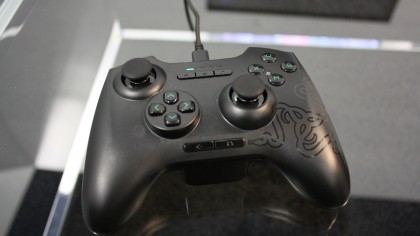
Unlike its Xbox predecessor, the Serval has "home" and "back" buttons that help you navigate around the user-interface, slightly altered triggers and D-pad, and a phone clip that allows you to use the Serval as Bluetooth controller for your mobile device. Pretty nifty. Turret is quite cool, too. It solves the age-old problem of putting a keyboard and mouse in the living room.
Honestly, though, comparing the Serval - a controller designed for portable, lightweight gaming - to the high-caliber, customizable Sabertooth feels a bit like a stretch. And based on my admittedly limited hands on time with it, the difference between the two is night and day: The Serval, for all its improvements, feels somewhat flimsy, and the mushy buttons just can't hold a candle to the responsive, tactile feedback you feel on the Sabertooth.
And while the Turret is a great addition to the living room setup, it doesn't quite seem ready for primetime.
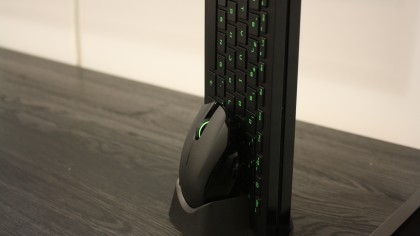
It's also worth noting that neither the Serval or Turret are included in the Forge TV's $99/£99 asking price - you'll need to shell out an extra $79 (£79) for each gamepad or purchase a bundle with one controller and a Forge TV for $149 (£149.99). No pricing or release date has been announced for the Turret.
Creating new pathways with Cortex and Android TV
When asked about what set it apart from the competition, a Razer representative replied that Forge TV will offer one of the best gaming experiences ever on an Android TV platform.
Which makes a whole lot of sense when you consider the two avenues at its disposal.
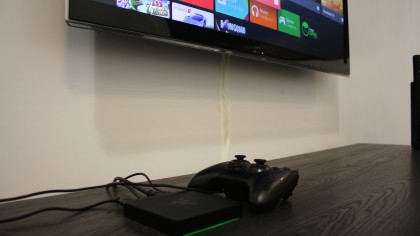
First and foremost, Forge has some relatively strong internal components that should make playing high-end Android games like Telltale's Game of Thrones or The Wolf Among Us nearly indistinguishable from consoles.
But more impressive than its Snapdragon processor is Razer Cortex, a service that lets you stream games directly from your PC to your Forge TV. If this is sounding a bit like deja vu, don't worry, you're not alone. Valve just announced a similar device called Steam Link that works in an almost identical fashion with games from a local PC running Steam.
However, considering the Razer Forge TV will cost twice as much as Valve's miniature bridge, there's still reason to be hesitant on plunking down $150. At least Forge TV has Android TV to lord over its half-priced counterpart.
The competition: Steam Link and Nvidia Shield
Had Razer launched Forge TV before the holidays, I think it would've flown off shelves.
Android TV grabbed some serious market share early after its launch thanks to its smart search functionality and playful, color-filled aesthetic. Four months ago, any Android TV - especially one with a heavy gaming focus like Forge TV - would've stolen the show.
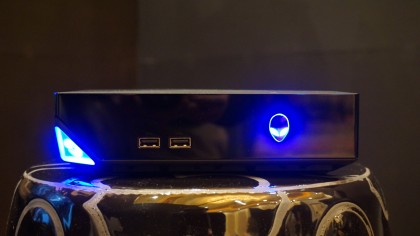
In the time since, the battlefield has grown dense thanks to Valve's Steam Link and the arguably more versatile Nvidia Shield, the first Android TV capable of streaming 4K content.
What will work in its favor is that Forge (due out "very soon" according to Razer), should beat Steam Link to market. And while it will face more direct competition when Nvidia Shield comes to store shelves later this year, the $50 price difference should help sway gamers to Razer's cheaper plastic.
Early verdict
The micro-console war is in full swing, and Razer is fighting on two flanks against a pair of PC gaming's biggest juggernauts, Valve and Nvidia.
One or two key factors will set it apart from the competition, but if Razer wants Forge TV to succeed, it will need to launch a finished unit before Nvidia Shield gains a foothold.
That said, Razer has a fairly competent product on its hands, capable of any type of media - whether movies, games or music streaming - that Android TV as a platform could throw at it. By pairing it with a game-streaming program and its own proprietary peripherals, Razer has secured Forge a spot in the upcoming battle royale. If it will seize the day or go out in a blaze of glory, however, remains to be seen.
Nick Pino is Managing Editor, TV and AV for TechRadar's sister site, Tom's Guide. Previously, he was the Senior Editor of Home Entertainment at TechRadar, covering TVs, headphones, speakers, video games, VR and streaming devices. He's also written for GamesRadar+, Official Xbox Magazine, PC Gamer and other outlets over the last decade, and he has a degree in computer science he's not using if anyone wants it.
What is a hands on review?
Hands on reviews' are a journalist's first impressions of a piece of kit based on spending some time with it. It may be just a few moments, or a few hours. The important thing is we have been able to play with it ourselves and can give you some sense of what it's like to use, even if it's only an embryonic view. For more information, see TechRadar's Reviews Guarantee.
